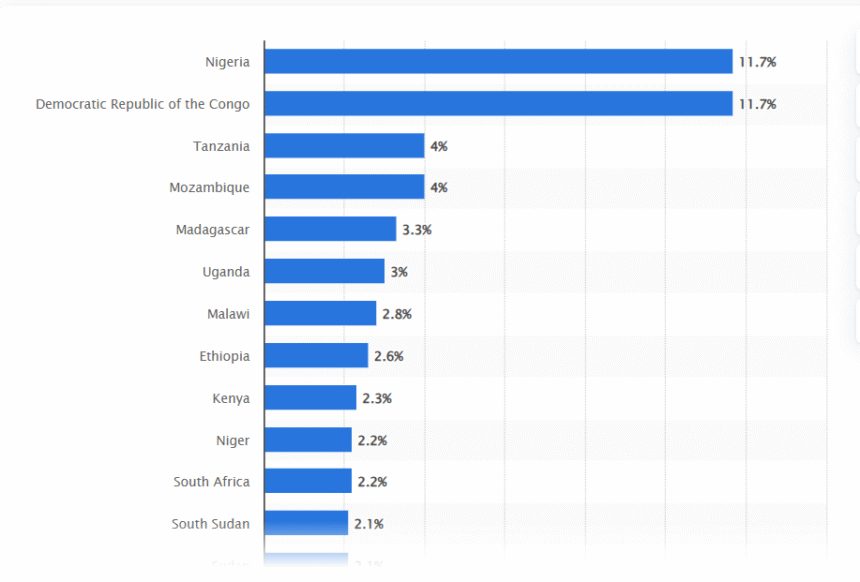By Isaac Okoro
Lagos, Nigeria– A new report by Statista paints a stark picture of the global distribution of extreme poverty, highlighting the disproportionate burden faced by several African nations. According to the report, in 2025, Nigeria and the Democratic Republic of the Congo (DRC) will each host approximately 11.7 percent of the world’s population living below the extreme poverty line, defined as living on less than $2.15 per day.
The grim forecast underscores the persistent challenges these nations face in combating poverty, despite projected declines in poverty rates across the continent. Other African countries, including Tanzania, Mozambique, and Madagascar, are also highlighted as having significant populations struggling in extreme poverty.
The report emphasizes the widespread nature of poverty in Africa, noting that an estimated 429 million people, roughly a third of the continent’s 1.4 billion inhabitants, were living below the extreme poverty line in 2024. Countries like Mozambique, Malawi, the Central African Republic, and Niger currently have the highest extreme poverty rates in Africa.
While projections suggest a decrease in poverty levels in the coming years, the report cautions that Africa will likely remain the poorest region globally. This underscores the need for sustained and targeted interventions to address the root causes of poverty.
The report identifies several factors contributing to the prevalence of poverty across Africa. These include critical situations related to employment, education, health, nutrition, war, and conflict. These interconnected challenges often create a vicious cycle, trapping individuals and communities in poverty.
The report also highlights the stark disparity between rural and urban poverty rates. In 2024, the extreme poverty rate in rural areas of Africa was estimated at 45 percent, compared to just 7 percent in urban areas. This disparity underscores the need for focused development initiatives in rural communities.
Furthermore, the report emphasizes the close link between poverty and malnutrition. Limited access to food leads to poor health, increasing the risk of poverty, while poverty itself can lead to inadequate nutrition. In 2022, nearly 38.3 percent of the world’s undernourished population resided in Africa, further highlighting the critical need for improved food security and nutrition programs.
The report serves as a critical reminder of the urgent need for concerted efforts to address poverty and its complex web of contributing factors in Africa. It calls for targeted interventions, sustainable development initiatives, and a renewed focus on improving access to education, healthcare, and nutrition to alleviate the suffering of millions living in extreme poverty.









